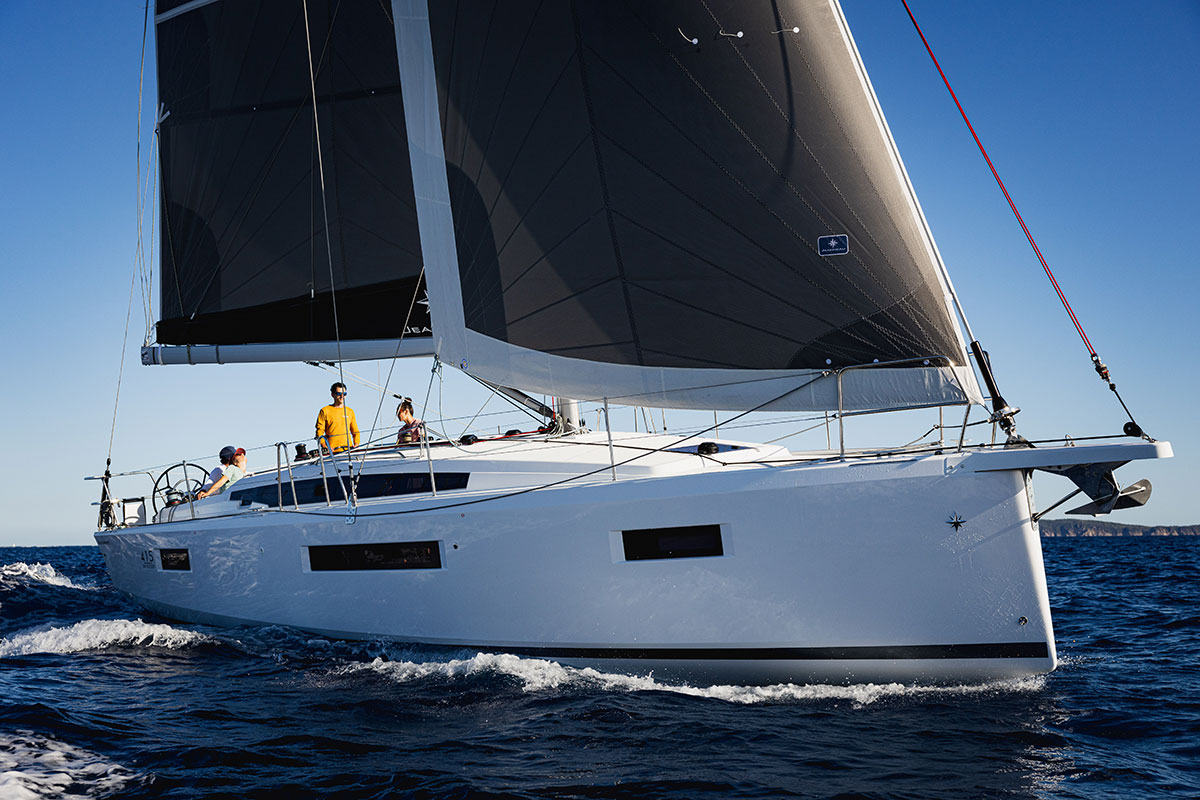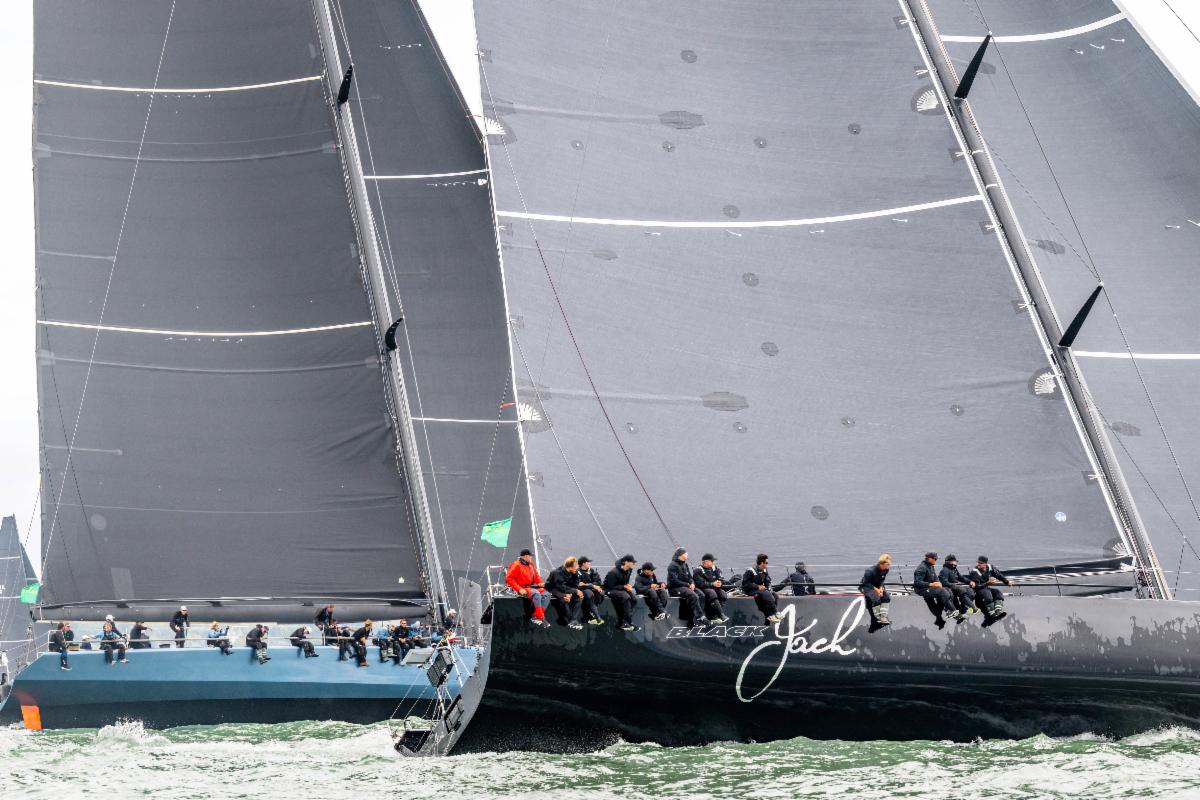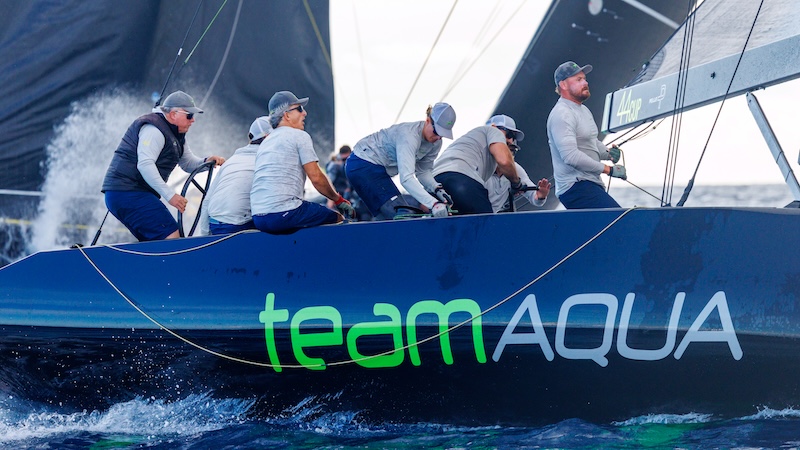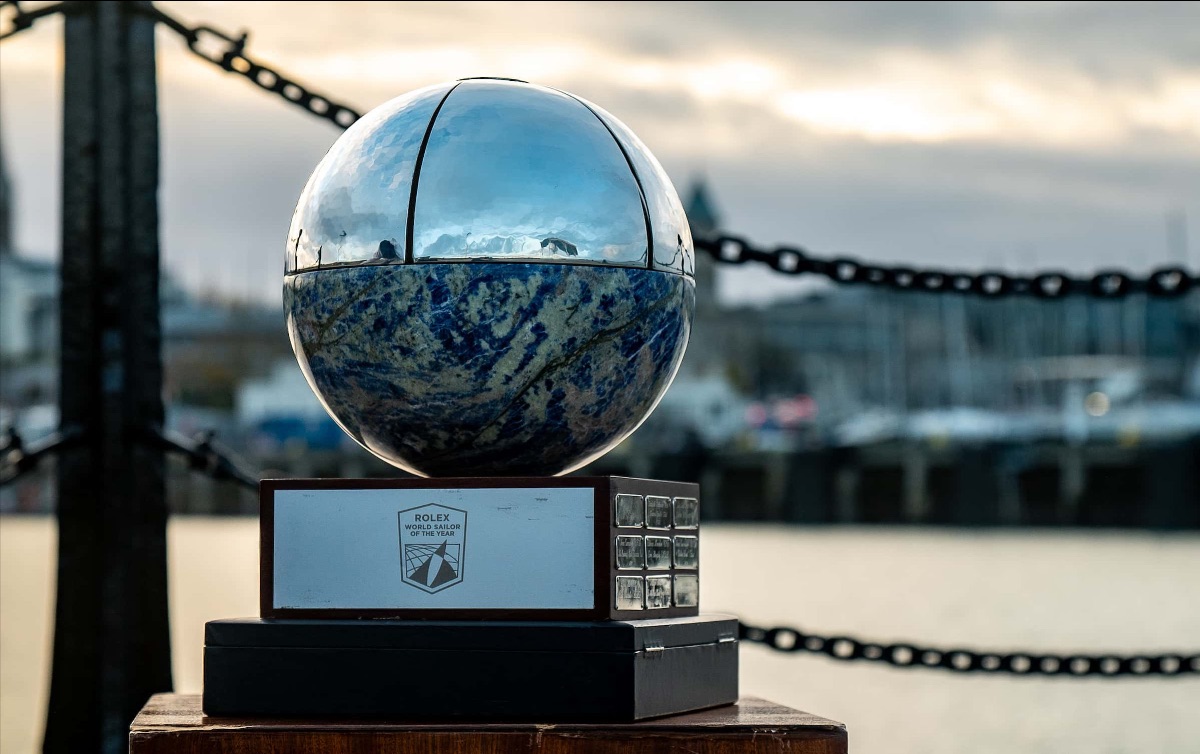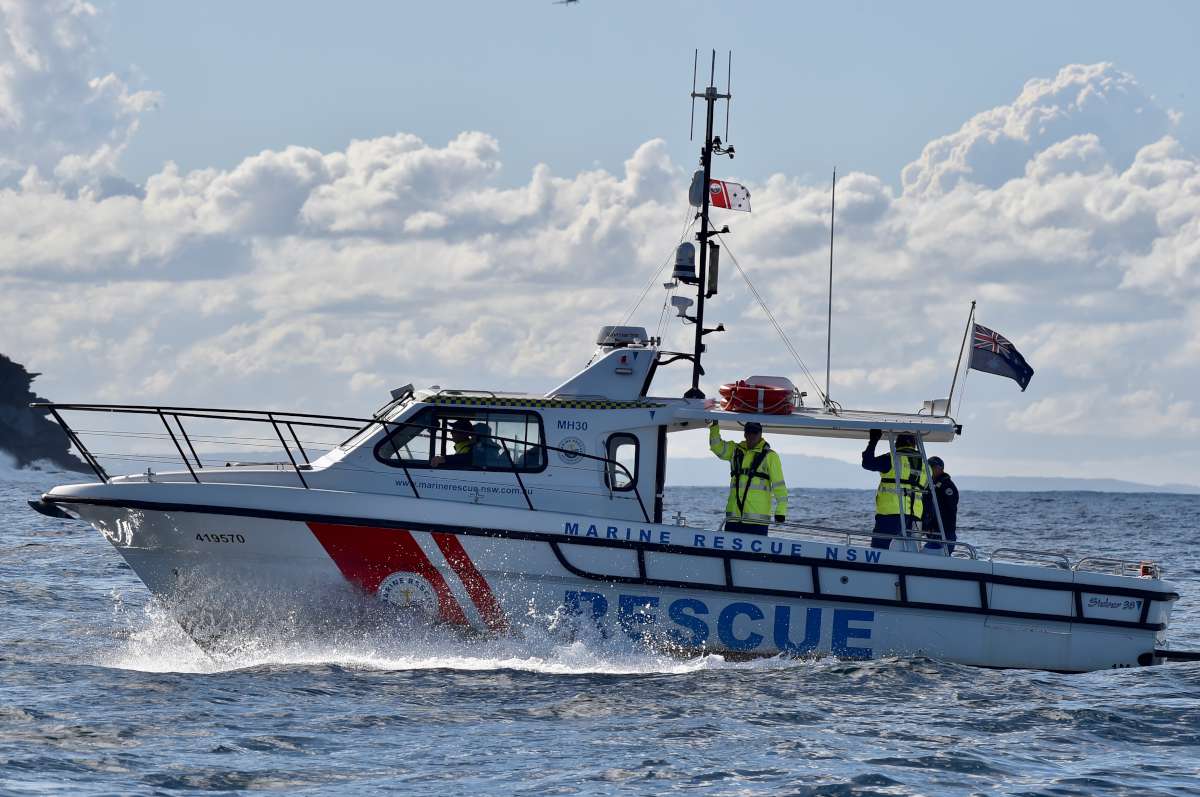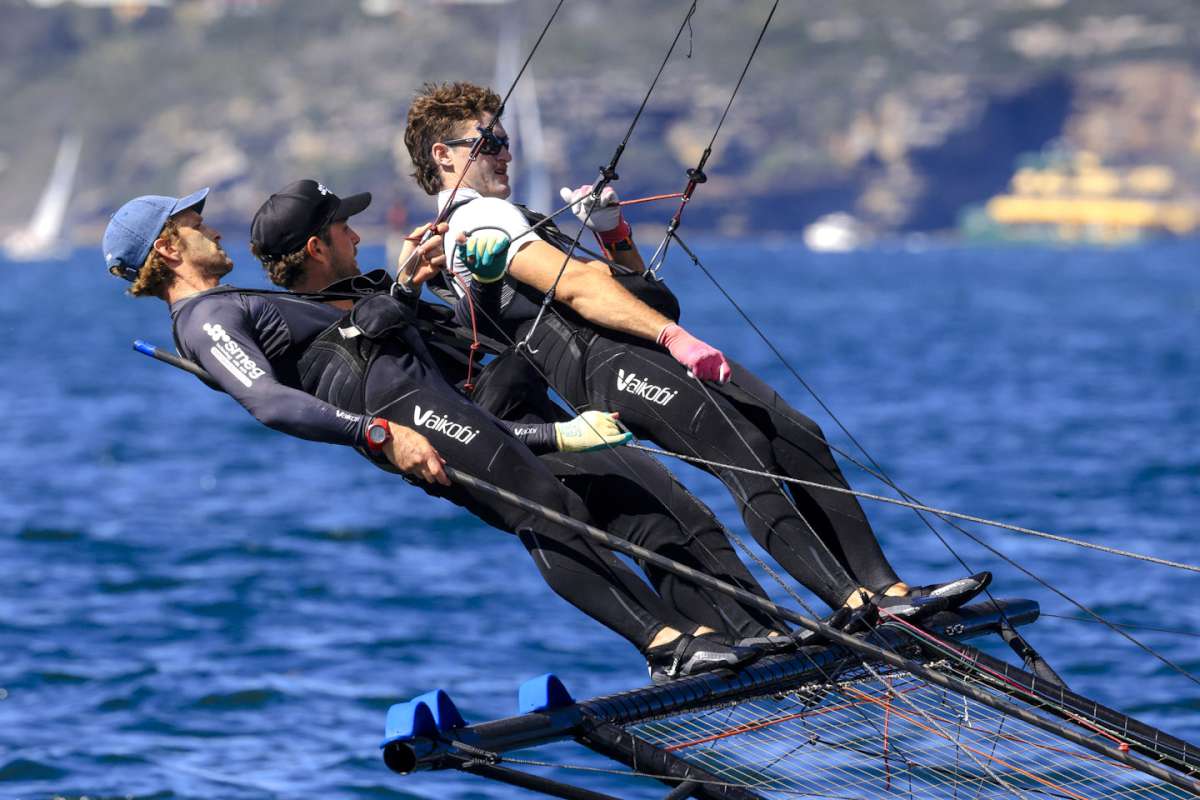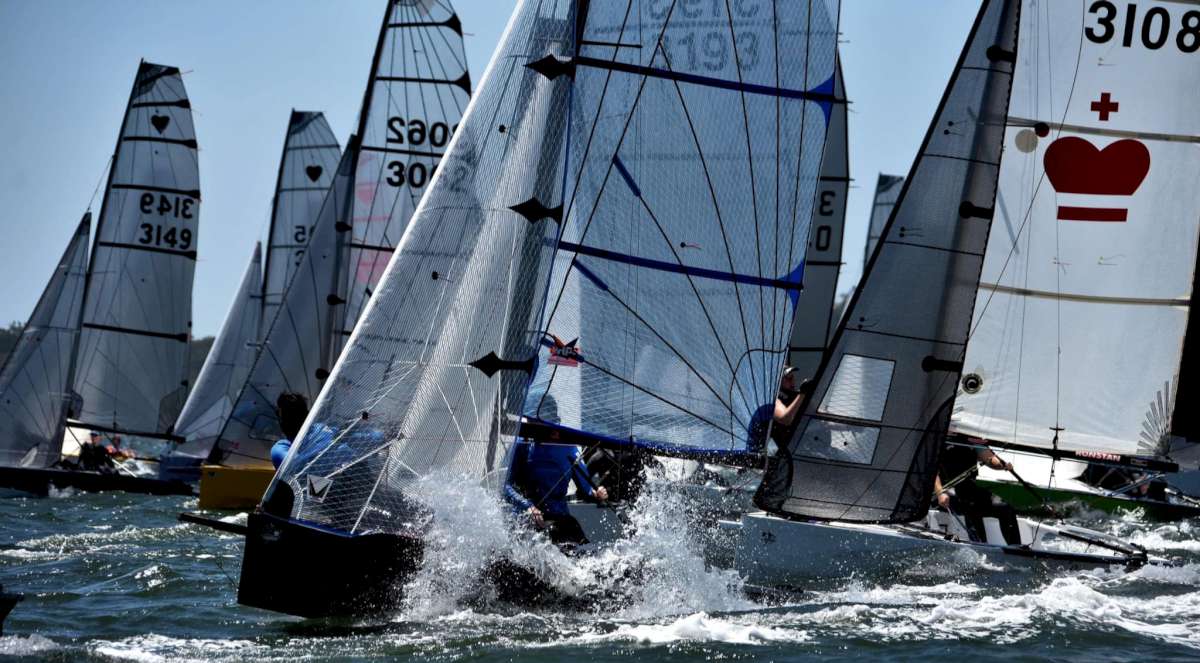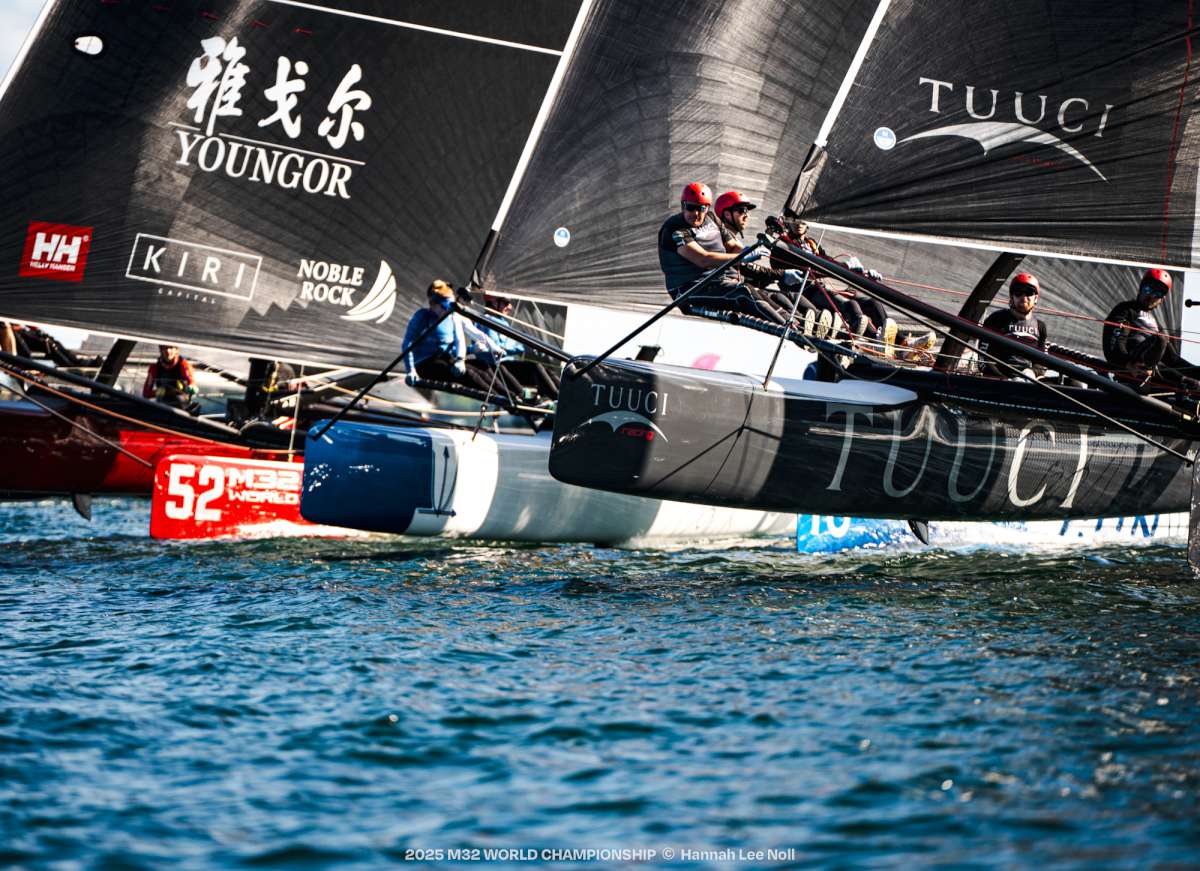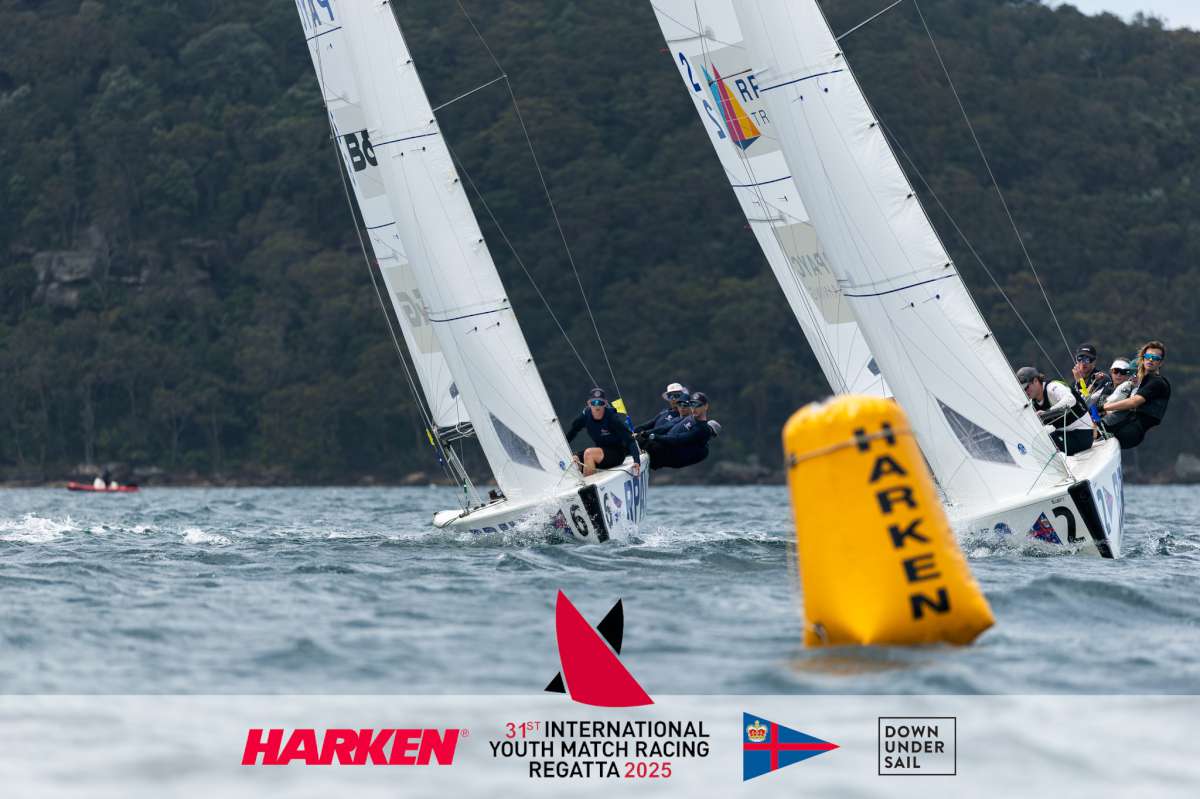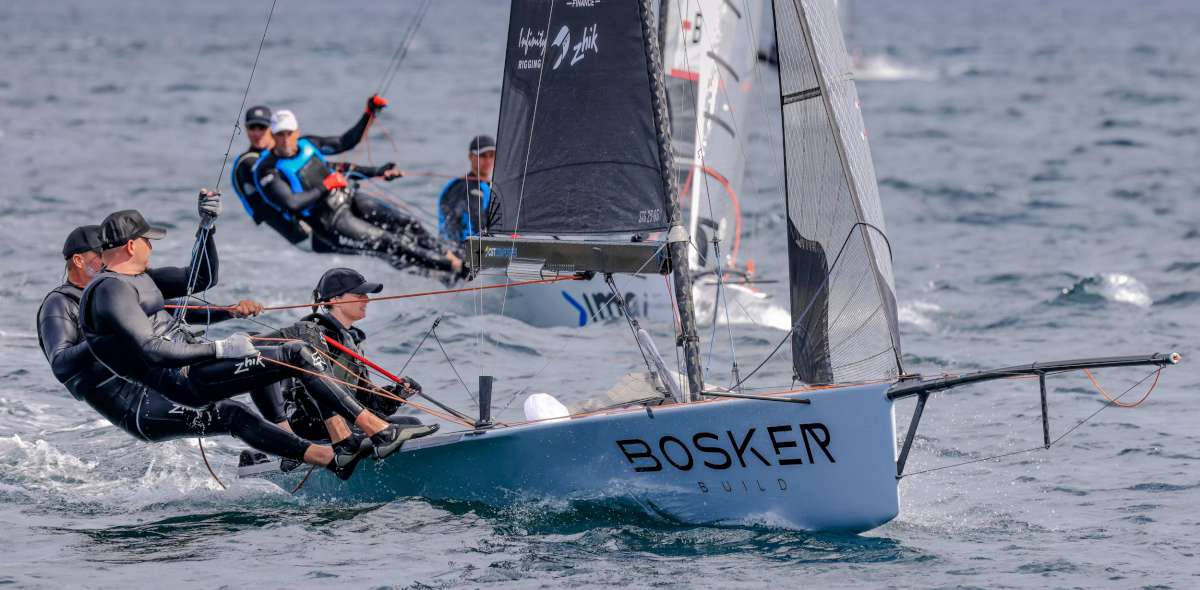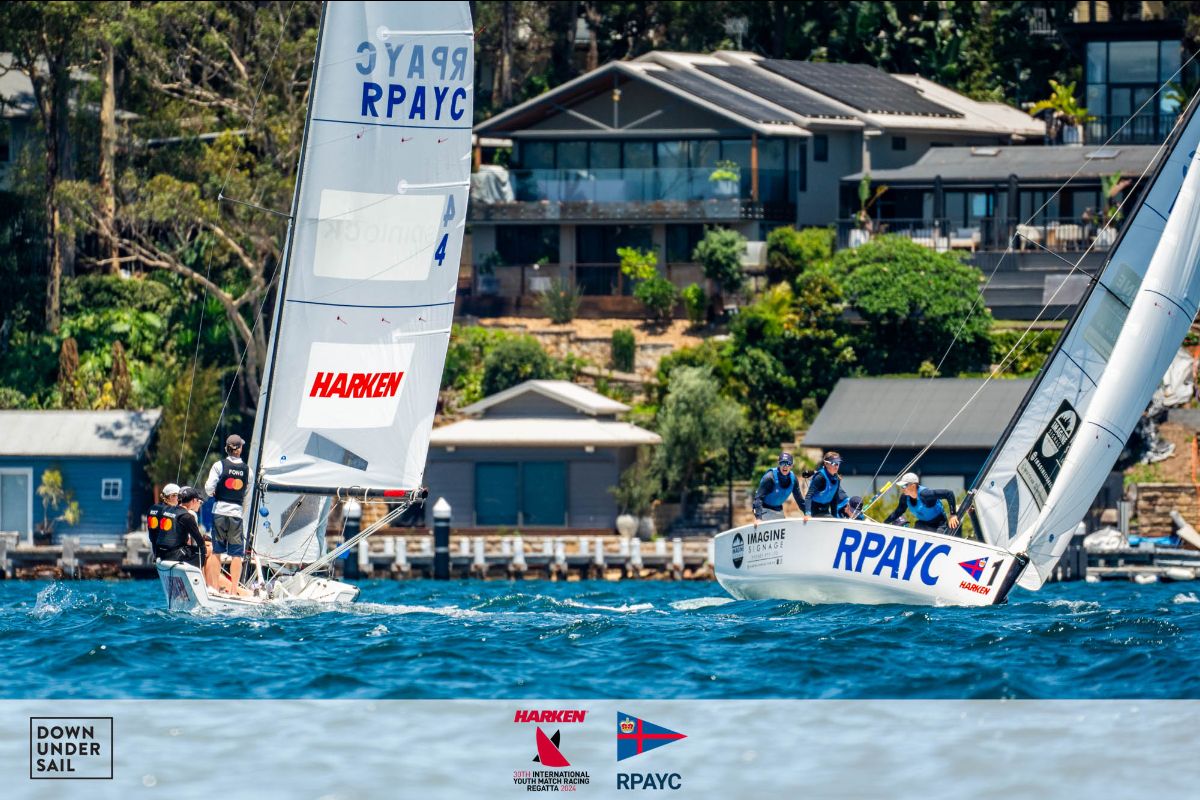Focus on multihulls
Why are catamarans becoming so popular? Is it just a simple case of more bang for your buck? Jon Neeves donned his super-sleuth hat to investigate.
It was three years ago, on my wife Jo's and my last trip up north, when we made the observation that almost half the cruising yachts heading to or from the Whitsundays were catamarans.
In places like Pancake Creek and Curlew (where charter boats cannot venture) five out of 10 yachts or three out of seven would be cats. Powerboat cruisers were notable by their absence. Why the popularity of the multihull?
Not only were half the yachts multihulls, but the multis were new. Many less than 10 years old and most less than five years old.
The monohulls tended to be older and from difficult-to-define origins. The monos all looked ocean-ready, well-found vessels, but they were not the yachts you see at the boat shows – they were yachts you thought you recognised the parentage of but could not quite put the finger on the designer or boatyard ð one-offs or limited production-run models ð the sort of boat commonly read about in “My Boat”.
So a question arose: Why are cruisers to the Whitsundays buying so many new multihulls?
Couples
The owners are impossible to define but they tend to be couples who make the voyage without any help. So the yachts need to be easily handled single-handed and comfortable on which to live ð because cruisers spend most of their time at anchor. You can get from Sydney to Mackay in about 14 day-sails (and the 14 back). The rest of the time ð including the nights of the “day-sails” ð is spent at anchor (or in a marina) and people usually spend at least a month in the Whitsunday Islands, so your yacht needs to be really comfortable.
New monos
So assuming a fundamental fault in new monohulls, I went off to find what was wrong with these “plastic fantastics”, and I looked at new yachts with similar value to an entry-level multihull of $450,000 or thereabouts, and frankly I was impressed (and recall we cruise a multihull). I could perhaps have chosen any number of modern monohull yachts, but I looked at the Jeanneau 45DS, the Hanse 430E and the Bavaria Vision 44 and compared these with the entry-level catamarans of the Lightwave 38, Seawind 1160 and Tasman 35. (Other yachts in this range might include Catalina 400, J-42, Dufour 425, Oceanis 43, Legend 44, Cyclades 43 and Elan Impression 434, to name just a few.)
Performance
It is difficult to comment on the quality of monohull designs, without spending hours sailing each yacht in a whole variety of offshore conditions, and sailing on Sydney Harbour is a waste of time if you want to know how a yacht performs on the 100 fathom line, but the numbers being sold worldwide and the reviews in the European press suggest that there are no significant, or any, problems. However, it was overall design, the quality of the finish and the thought put into the detail that was so impressive. Here were yachts with bow rollers that folded over with their anchors and were then secured in bow lockers leaving bows clear ð and maintaining this theme ð all running rigging led to the cockpit and all led under the deck. These were yachts with strong points built into the moulds, allowing easy fit of new equipment, inner forestays and jackstays. Virtually any yacht now has furling headsails but the new monos have furling mains (operable from the cockpit), and with vertical battens this is difficult for multis to compete with.
The whole deck design is focussed at simplicity and ease of handling for one person on deck – lines are led to the helm and most yachts now have a moulded console at the wheel to take instrumentation and there is always room in the console for a decent sized chart plotter screen ð no afterthoughts here.
I'm less keen on the use of two wheels (as for cruising living space they take up a lot of room and you hardly need two wheels if you are on an autopilot) but these boats are pretty beamy, and it will make marina berthing easier.
Below
But it is below “design” is most obvious. There are fold-up flaps to increase the work surface area, drawers under the sofa (rather than lift up the upholstery) to allow easy use of space. Woodwork is in abundance, admittedly mostly veneer, and well crafted (if computer-cut perfectly fitting locker doors can be described as crafted). And the woodwork is perfectly matched. It's so good there is a tendency to almost think it's a printed paper veneer, but it's all wood ð I checked.
Refreshingly there is use of glass as splashbacks round the galley, and handholds and fiddles are in abundance. Galleys are well laid out, well equipped and designed to be operable at sea. Chart tables are getting smaller ð but still exist at least as a desk with room around for a plethora of instrumentation, and the saloons are spacious enough for graceful and relaxed entertaining.
One negative for yachts of this size is that the saloons are now large and open enough to question whether a bit more fixed furniture down the centreline might make it easier and safer to move around in boisterous conditions.
Saloon myth
But the oft-quoted advantage of the multihull's large saloon is something of a myth because monohull saloons are probably 50 percent larger than the same-priced multihull because they take full advantage of the big beams, in excess of 4m. Sleeping accommodation is luxurious – better than most people have at home (how many of you have an oval bed?) ð although personally I would rather have this decadence downsized in favour of bigger galleys and navigation stations because when I'm asleep that extra space does not cross my consciousness.
“Bodging” is a word completely missing from these European builder's lexicon (if it was ever there) but “precision”, “exact”, and to “within 0.5mm” must be boringly familiar to the craftsmen on the production line, or maybe they really are all built by robots.
Against the trend
A most interesting facet ð against the trend common in Australian multihulls ð it is possible to spend $450,000 and own a monohull yacht for coastal cruising with realistic berthing, an owner's stateroom and another double (with en-suite for each) for the occasional guests. Berth numbers can be increased – every builder caters for both the charter and the owner-couple market ð but it indicates that the European boatbuilders have recognised the purchasing power of a new generation of boat owners. Being fairly large boats with only two sleeping cabins has at last allowed the designers to produce yachts with decent head and shower cubicles that should make taking a shower on a yacht at sea a pleasure compared with the offerings and discomfort of 20 years ago.
A downside of these yachts is “what you see is what you get”. Personalisation is minimal ð there might be a choice of wood and upholstery finish ð but the range is limited. If you do not like the deck gear, buy another boat. The yards have streamlined production to achieve that compromise of quality at a price and one thing that is lost is customisation ð although if you are making most of the people happy all of the time.
Work in progress
So, given that the new generation of the $450,000 monohull stacks up so well, how do the multihulls compare? The answer is obvious ð differently!
The Australian multihulls are a work in progress – and if you do not believe this check up on how the Lightwave 38 has developed over 11 years, or find two Lightwaves that are the same (and even better look at the Seawind 1000). As R Knox Johnston of Broadblue Catamarans said: “The smaller boatbuilder has to be more agile to compete with the volume production builders.” Our local industry proves this to be true. You can have two queen berths and two voluminous head/shower units, or up to two queens, one double and two singles but only one voluminous head/shower and almost any combination in between. You can have galley up or down, nav station up or down and still retain much of that large saloon.
Expect to pay
If you want a variation from standard, expect to pay. At the basic level modern cats come with two queens, a double and one generous head/shower unit (excepting the Seawind that has two head/shower units as standard). Galleys tend to be down (excepting the Tasman), fairly voluminous (bigger than the monos), very well equipped, very safe and easy to use at sea and nav stations can be up or down (and if down with a chart table big enough to almost take an unfolded chart ð so again bigger than the monos).
Historically Australian multihulls had all sail controls at the mast, which remains unfortunately true today (except for the Seawind and they are all above deck) but it is possible to option, more money, for all halyard and reefing lines to be led to the cockpit on the Tasman and Lightwave, but the results so far look a bit of a series of afterthoughts.
Contrastingly, virtually every multihull builder in Europe offers, as standard, cockpit control of all running rigging. And for a neophyte owner hit by a southerly buster prancing about at the mast trying to put a reef in with their partner at the wheel cannot be a bundle of laughs ð even in daylight.
The interior finish on the Australian catamarans is different to that of the European monohulls. Gone is the all-embracing timber finish in favour of a lot of bare gelcoat or two-pack sprayed finish. Drawers can be solid and dovetailed and gone are the flat locker doors in favour of panelled, often solid wood doors – and then you can customise the roof lining, upholstery, and wood finish to produce any effect you want – refreshingly, often within the list price.
These boats look as if they are built by people and contain some endearing differences missing from the “hi-tech” monos; for example, the woodwork does not match so well ð it looks like real timber.
Water and power
Looking at other factors important to people cruising draws out some strange comparisons. Most vessels have minimal water capacity, 400/500l is tyThese yachts are all intended to be sailed, as opposed to motored, and carry 200/300L of fuel that will drive the cats, on one engine, for about 400nm and the monohulls maybe 300nm – they have bigger engines. The monohulls tend to have 55hp engines (you can option larger) and the cats 2 x 30hp. The engine bays on the monohulls provide excellent access for servicing but the narrow hulls of the cats make servicing any components on the engine's side something for a gymnast ð so it is difficult to understand multihull boatbuilders' preference for Volvo or Yanmar in favour of an equally reliable Kubota conversion ð and if Volvo 2 x 115 amp/hr alternators seems a bit excessive!
Sail wardrobe
The basic sail wardrobe of all the yachts is one mainsail and one headsail and it should be quite feasible to enjoy good sailing in the monohulls with the supplied package. To enjoy the off-wind potential of the catamarans you will need to option for a screecher and all its associated gear, prodder, extra halyard and winches, which can be a significant increase in purchase price.
Without exception all the yachts come with either a Delta or plough anchor, which in my personal opinion is anachronistic (see my story, “Anchors ð the never-ending story,” CH March 2008).
Part of the design
The alternative is locker stowage (and pump it up every time you need it) or clutter up that nice clean foredeck.
Another multihull advantage is that the cockpit is naturally covered as part of the design, with an extension to the saloon roof providing protection, from sun and rain, for outside living – and usually good access to the boom. Not so the monohulls, where it is necessary to option some form of protection from the sun, and which inevitably looks more or less like an afterthought – and then blocks access to the boom end.
Imported multis and monos
Increasingly we are seeing imported multihulls at the boat shows, and if the Australian dollar maintains its current strength we can see this trend continuing and growing. The entry-level European catamarans, Mahe 36, Lagoon 380 etc may lack the ability for customisation, but they are as well built as their European monohull siblings and their continued importation, at least in small numbers, will ensure the quality of the domestic industry in maintained at international levels.
A trend in Europe has been the transfer of production to the eastern, lower-labour-cost, part of Europe (Poland is popular), which might explain why European prices have been kept “low”. Oddly no-one has successfully developed the even cheaper Asian production base for volume yacht building.
On balance. the European monos offer real value for money and are big enough to cross oceans – but with two-metre draughts you need to watch the tides if you are crossing the Great Sandy Strait or transiting from Southport to Moreton Bay via the Broadwater. In their basic form they need much less spent on them to get into a coastal cruising specification, no screecher kit, and when they need servicing virtually any yard on Australia's coast can slip them (not so the multi where slipping anything over a six-metre beam is less easy and very difficult the farther south you go).
Three simple facts
And why then are catamarans so popular? It comes down to three simple facts: modern cats are as good in terms of quality of finish (or as close as to make no difference) as monohulls (the local multi industry has come of age), they sail flat and you see Whitehaven Beach from your queen-sized berth, the galley, the saloon and the covered cockpit. Owners make the trip to The Reef to, well, see The Reef, and they can see it from anywhere in their yacht. They are prepared to sacrifice upwind performance because it is only achieved in a monohull at 30¡ and when push comes to shove the iron headsail works a treat.
Strangely the stunning off-wind performance is not a significant factor (if you don't like a boat heeling you probably don't like 16 knots of boat speed) and nor is a shallow draught ð the latter is just nice and the cruising guides were built for monohulls so exploring shallows takes many out of their comfort zone.
The expansive decks of the multi are less well used because of skin-cancer awareness, but the covered cockpits that you can walk around in and leading straight to that saloon are perfect for sundowners whatever the weather.
So the popularity of the multihull comes down to living in the view and flat sailing ð simple really!
Three years
And what of the new monohulls: what are they used for? A number of dealers gave similar answers. The owners buy the yachts with the intention of making the pilgrimage in about three years' time. In the meantime they are used as a simple maritime holiday home, pottering around Pittwater, Port Phillip or the Broadwater. When three years' time arrives, priorities may have changed and the trip is postponed or, sadly, cancelled.
Conversely, the catamaran owners we know buy them to cruise immediately. Some only make the cruise once (and then they go back to work), but more often it's an annual event.
NOT A NICHE MARKET
For those who think that multihulls are a niche market, think again. The domestic production industry is launching around 35 entry-level cruising multihulls every year (worth about $17m) and this figure is growing. (This excludes the perennially popular Seawind 1000/1050XL ð excluded only because of the absence of power-generating capacity.)
Add to this a few imports, the larger multihulls produced by Perry, Lightwave etc, then the tens of boatyards up Australia's east coast specialising in custom-built multihulls and the myriad of private builders (at least 450) and you have a very vibrant industry. Think of in excess of 100 launchings per annum – and this industry has matured and come of age within 10 years.





